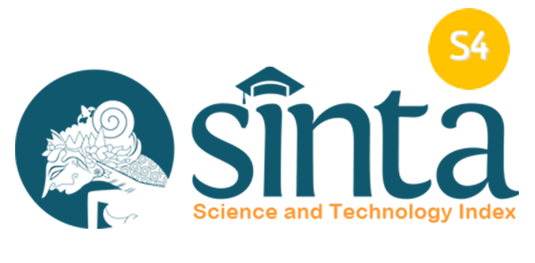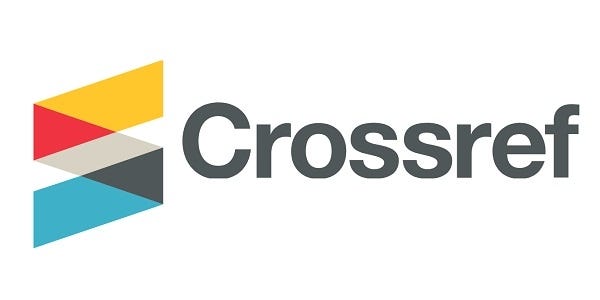EFL Students’ Perception of Online Learning During Covid-19 in SMP Negeri 3 Busungbiu
DOI:
https://doi.org/10.36663/tatefl.v4i1.434Keywords:
EFL, Students' Perception, Online LearningAbstract
This study focused on investigating EFL students’ perception towards online learning during Covid-19 in SMPN 3 Busungbiu. This study used mixed method research design. This method is the combination of qualitative and quantitative approach in gaining complete understanding of students’ perception. The data were collected through questionnaire and interview. The questionnaire consists of 25 items. The participants in this study were 7th grade students in SMPN 3 Busungbiu. The result found that the 7th grade students in SMPN 3 Busungbiu had a positive perception towards online learning during Covid-19. They had positive perception in the perceived usefulness and perceived instructor characteristics dimensions. They felt online learning was useful to be implemented during Covid-19 and the teacher also motivated, encouraged them to express their opinion, and gave them sufficient time to submit assignments. Meanwhile for the perceived ease of use dimension, it got neutral perception because they felt difficulty in understanding the material taught online, experienced challenges, and had difficulty socializing with others during the online learning.
Downloads
References
Allo, M. D. G. (2020). Is the online learning good in the midst of Covid-19 Pandemic ? The case of EFL learners. Jurnal Sinestesia, 10(1), 1–10. https://sinestesia.pustaka.my.id/journal/article/view/24
Alshammari, M. T. (2020). Evaluation of gamification in E-learning systems for elementary school students. TEM Journal, 9(2), 806–813. https://doi.org/10.18421/TEM92-51
Cai, H. (2012). E-learning and English teaching. IERI Procedia, 2, 841–846. https://doi.org/10.1016/j.ieri.2012.06.180
Dube, B. (2020). Rural online learning in the context of COVID-19 in South Africa : Evoking an inclusive education approach. Multidiciplinary Journal of Educational Research, 10(2), 135–157. https://doi.org/10.17583/remie.2020.5607
Harmilawati, H., & Khaerunnisa, K. (2020). Students’ perception toward E-learning in pandemic era at English Education Study Program of IAI Muhammadiyah Sinjai. JLE: Journal of Literate of English Education Study Program, 1(2), 1-11. https://journal.uiad.ac.id/index.php/jle/article/view/470
Hartati, E. (2013). The language functions used by teachers of content subjects using English as the medium of instruction (The case of Mathematics and Science teachers in Semesta Bilingual Senior High School). English Education Journal, 3(2), 85–93. https://journal.unnes.ac.id/sju/eej/article/view/2711
Hendrastomo, G. (2008). Dilema dan tantangan pembelajaran E-learning. Majalah Ilmiah Pembelajaran, 1, 1–13. https://journal.uny.ac.id/index.php/mip/article/view/6873
Jamila, Ahdar, & Natsir, E. (2021). Problematika guru dan siswa dalam proses pembelajaran daring pada masa pandemi Covid-19 di UPTD SMP Negeri 1 Parepare. AL MA' ARIEF: Jurnal Pendidikan Sosial dan Budaya, 3(2), 101–110. https://doi.org/10.35905/almaarief.v3i2.2346
Kang, M., & Duong, A. (2020). Student perceptions of first-time online learning during the Covid-19 pandemic in Vietnam. i.e.: inquiry in edcuation, 13(1), 1-17.
Lestiyanawati, R., & Widyantoro, A. (2020). Strategies and problems faced by Indonesian teachers in conducting E-learning system during COVID-19 outbreak. Journal of Culture, Literature, Linguistic and English Teaching, 2(1), 71–82. https://doi.org/10.32699/cllient.v2i1.1271
Prawisanthi, N. W. T. A., & Permana, I. G. Y. (2022). Blended learning during pandemic: EFL undergraduate students’ satisfaction. Cetta: Jurnal Ilmu Pendidikan, 5(2), 160–166. https://doi.org/10.37329/cetta.v5i2.1700
Rahman, K. (2020). Learning amid crisis: EFL students’ perception on online learning during Covid-19 outbreak. ETERNAL (English, Teaching, Learning, and Research Journal), 6(2), 179. https://doi.org/10.24252/eternal.v62.2020.a1
Siahaan, M. (2020). Dampak pandemi Covid-19 terhadap dunia pendidikan. Jurnal Kajian Ilmiah, 1(1), 73–80. https://doi.org/10.31599/jki.v1i1.265
Songbatumis, A. (2017). Challenges in teaching English faced by English teachers at MTsN Taliwang, Indonesia. Journal of Foreign Languange Teaching and Learning, 2(2), 54–67. https://doi.org/10.18196/ftl.2223
Sofyana, L., & Rozaq, A. (2019). Pembelajaran daring kombinasi berbasis Whatsapp Pada kelas karyawan Prodi Teknik Informatika Universitas PGRI Madiun. Jurnal Nasional Pendidikan Teknik Informatika (JANAPATI), 8(1), 81. https://doi.org/10.23887/janapati.v8i1.17204
Syarafina, D. F. (2021). Effectiveness of English online learning strategies during the Covid Pandemic at SMP Muhammadiyah 10 Sidoarjo. Proceedings of The ICECRS, 10. https://doi.org/10.21070/icecrs20211171
Weldon, A., Ma, W. W. K., Ho, I. M. K., & Li, E. (2021). Online learning during a global pandemic: Perceived benefits and issues in higher education. Knowledge Management & E-Learning: An International Journal, 13(2), 161–181. https://doi.org/10.34105/j.kmel.2021.13.009
Wiguna, I. G. N. W. (2022). Students’ preferences toward virtual, classroom, and blended learning. Journal of Educational Study, 2(1), 65–71. https://doi.org/10.36663/joes.v2i1.262
Wijaya, I. N. A., Ratminingsih, N. M., & Dewi, N. L. P. E. S. (2022). English language education student-teachers’ perception on TPACK. The Art of Teaching English as a Foreign Language (TATEFL), 3(1), 9–18. https://doi.org/10.36663/tatefl.v3i1.193
Wiraningsih, P., & Santosa, M. H. (2020). EFL teachers’ challenges in promoting learner autonomy in the 21st century learning. Journal on English as a Foreign Language, 10(2), 290–314. https://doi.org/10.23971/jefl.v10i2.1881
Wirantaka, A., & Wahyudianawati, P. A. (2021). Characteristics of effective English teacher for millenials. Journal of Foreign Language Teaching and Learning, 6(2), 185-206. https://doi.org/10.18196/ftl.v6i2.11549
Witanaya, I. P. M., Juniarta, P. A. K., & Budiarta, L. G. R. (2022). Students’ and parents’ perception on online English learning during pandemic. The Art of Teaching English as a Foreign Language (TATEFL), 3(1), 59–67. https://doi.org/10.36663/tatefl.v3i1.255
Downloads
Published
How to Cite
Issue
Section
License
Copyright (c) 2023 Ketut Darmiyani

This work is licensed under a Creative Commons Attribution 4.0 International License.
License Terms
- Attribution — You must give appropriate credit, provide a link to the license, and indicate if changes were made. You may do so in any reasonable manner, but not in a way that suggests the licensor endorses you or your use.
- ShareAlike — If you remix, transform, or build upon the material, you must distribute your contributions under the same license as the original.
- No additional restrictions — You may not apply legal terms or technological measures that legally restrict others from doing anything the license permits.

















